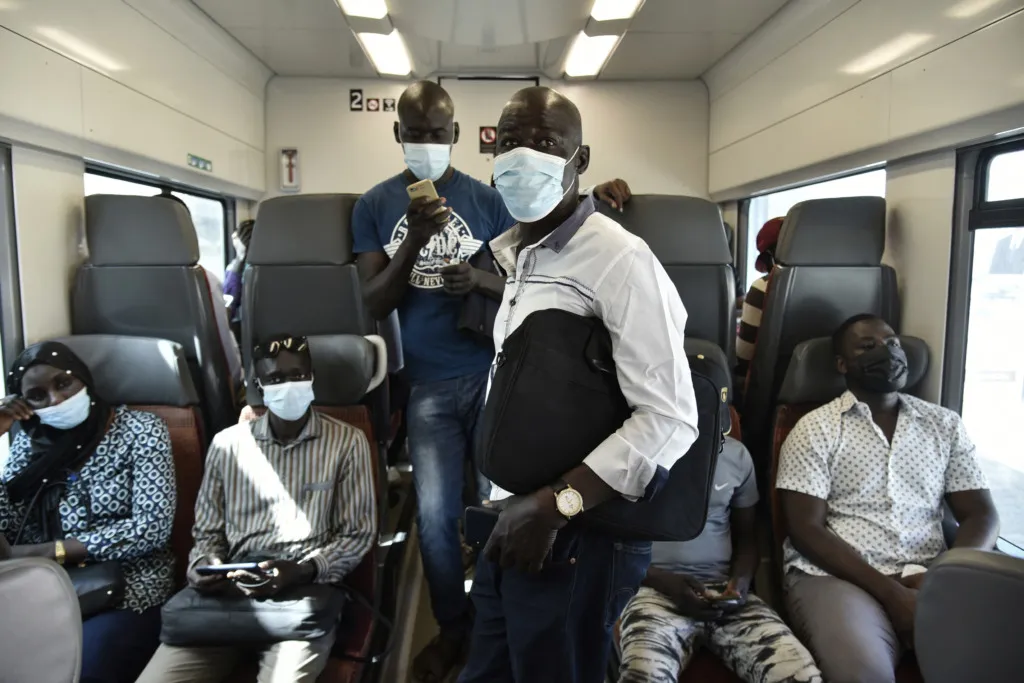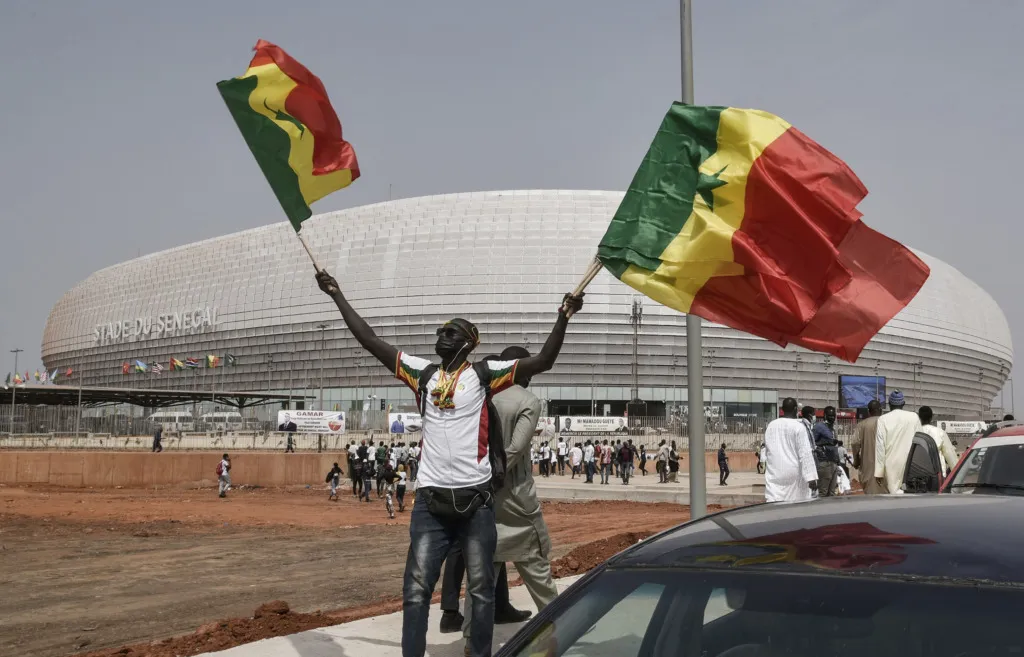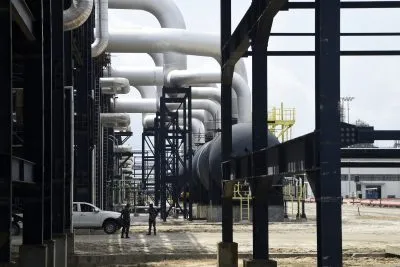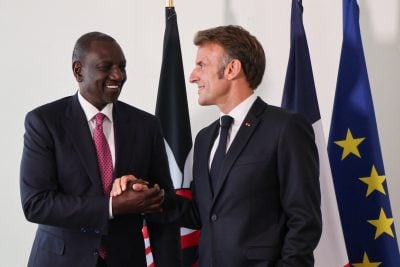On a chilly downtown morning in February, streams of wrapped-up commuters head through Dakar’s refurbished colonial-era main railway station to board the new €1bn high-speed Dakar Regional Express Train (TER).
The station, built in 1885 to link Dakar to Saint-Louis, at that time the capital of Senegal under French rule, has been brought back to life and dressed up with fresh paint, ready for its most important commission after decades of neglect.
A vendor exchanges a return ticket to Diamniadio – a futuristically planned city under construction 32km southeast of Dakar – for CFA1,500 ($2.50). Using a currency backed by the French Treasury under a fixed exchange rate is a final nod to the past, before commuters scan their tickets at barriers and descend stairs to a spotlessly clean platform.
Senegal is emerging and its landscape is quickly changing. The country has a new state-of-the-art football stadium, an international airport, scores of wind and solar plants, and a gigantic Museum of Black Civilisations, which President Macky Sall says will anchor Senegal’s young population to their history.
Senegal’s infrastructure development strategy is being paid for by an increasingly diversified economy and loans from international partners eager to back an African government implementing a long-term vision in a West Africa once again beset by military coups.
A dream come true
On the platform, attentive staff direct passengers onto the 72-metre four-car Coradia Polyvalent train, one of 15 belonging to SETER, the TER operating company, which is owned by France’s state-run railway company, SNCF. Each train can transport 531 passengers at speeds of up to 160 km/h.
The first phase of the line, which was inaugurated in December 2021, serves 13 stations from Dakar to Diamniadio. The second stage, due to be completed next year, will link Diamniadio to Blaise Diagne International Airport, 19km away.
“We say God bless Macky Sall and these people for making this line, and helping our dreams come true,” one passenger on his way to work tells African Business, as his friend unzips his top to reveal Senegal’s national football kit underneath.
Nicknamed “the Lions of Terenga”, the team sparked days of wild celebrations across Senegal in February, after winning their first international trophy at the latest Africa Cup of Nations by defeating Egypt in the final on penalties.
Trains every 10 minutes
The train leaves Dakar’s main station on time and heads east, skirting along the Atlantic coast and down to Rufisque, once an important port city now swallowed up by Dakar’s urban sprawl.
“We operate trains from 5.30am to the last departure at 10pm, with a train every 10 minutes,” says Frédéric Bardenet, SETER’s general manager. “The target number for the first year is 75,000 passengers, and then the target for year two is 115,000 passengers per day. From its inauguration until January 18, the daily average was between 30,000 and 40,000 passengers.”
Senegal’s government claims traffic jams cost Dakar €152m per year, and by linking the TER stations with express buses, many of Dakar’s 3m plus inhabitants have the beginnings of a modern transport network.
The shimmering white trains are operated by a team of drivers chosen from 3,000 applicants. Selection and training began in 2019, and SETER’s 16 train managers and scores of drivers come from a diverse field. A few lawyers and project managers changed careers to drive trains on the TER, says Bardenet.
Training was conducted by French and Senegalese instructors, who used simulators and classroom teaching in Dakar, before taking the trainees on a six-month apprenticeship on France’s own high-speed railways.
SETER will operate the line for five years before handing over to the Senegalese government, allowing skill-sets to be transferred and maintenance knowledge to be adequately built up.
Out of the window, rows of baobab trees wait for this year’s rains. Ugly now, with shorn trims from the parched dry-season climate, the train tracks cutting through the landscape approaching Diamniadio are the youngest structure in sight.

Flagship project
The state-owned railway line took five years to build, creating 8,500 jobs. It is one of the flagship projects of Macky Sall’s Emerging Senegal Plan and received support from the French Development Agency (AFD), which provided a $250m loan, and the African Development Bank (AfDB), which loaned $192m.
The AfDB says 80% of the 13m daily trips taken by Dakar’s citizens are made by foot, due to a lack of cheap and efficient transport. Dakar’s population is increasing by 100,000 people each year, and by ensuring a journey time of just 45 minutes between Dakar and Diamniadio, the government hopes the new city will ease the burden on jobs and housing in the capital.
Senegal is promoting Diamniadio as an information and communications technology centre. An ICT park is being built, and Sall plans to foster a tech sector by creating 35,000 direct jobs and 105,000 indirect jobs by 2025.
Maintenance is carried out by a team of 60, who repair the trains mostly at nights in one garage. SETER has had to plan stocks of spare parts five years ahead, Bardenet says, as shipping spares from Europe will take more than a month.
“There’s a lot of issues for supply chain management, and that’s the very tough thing, and also to train our maintenance department. We sent the first 11 to spend seven months in France and Morocco in order to practice, on more or less the same transits used by SNCF,” says Bardenet.
The TER has had to deal with criticisms, however, as some 16,000 people were evicted from their homes and businesses to build the line. Members of a collective are seeking €76m in compensation for 2,000 individuals from Apix, the state-owned agency overseeing the project. The government says almost everyone owed money has received it, but some resettlements are continuing.
Diamniadio’s brand new stadium
In under 45 minutes the train arrives at Diamniadio’s TER terminal. Billboards celebrating Senegal’s football team greet passengers exiting the bright and lofty station. Giant infrastructure projects, hotels and modern office blocks wait for a population to inhabit them.
The people will trickle in, moving to the city as jobs are made in the years ahead. For now, Senegal’s brand new $260m 50,000 seater stadium dominates the skyline. Named in honour of former President Abdoulaye Wade, it held its first exhibition match and welcomed jubilant fans for the first time in February.
Designed and built by Turkish firms, Macky Sall dedicated it to “young people”, saying it “is an invitation to continue our path towards excellence”. During its inauguration, supporters blared out vuvuzelas, before smoke in the colours of Senegal’s flag filled the arena and covered the immaculate pitch.
Built in just 18 months by Summa, it will host the summer Youth Olympics in 2026. It has an autonomous water and electricity supply system thanks to a 2 megawatt photovoltaic plant, to control future operating costs. A training ground and 2,000 capacity annex were incorporated into the design by Turkish studio Tabanlıoğlu Architects.

A museum, 800-person press conference room, 50 VIP boxes and restaurants are housed within the bowl shaped design. Hard and soft landscaping on the stadium’s anterior mirror the landscape around Diamniadio, with the facade comprising layers of metal mesh panels. Light projects and diffusers can light up the night sky when the stadium is in use, bringing into focus the illuminated shell as fans sit in outside parks.
“The stadium project is part of an already developing master plan made for Diamniadio, where we already have built projects,” says Melkan Gürsel, a partner and architect at Tabanlıoğlu, who designed the stadium.
Tabanlıoğlu wooed Macky Sall with their design of conference centres in Libya and Equatorial Guinea, and had free rein in their plans for the stadium. Opting for a decentralised plan, Gürsel chose an intimate blueprint, enabling every fan to have a clear sightline. Fans close to the pitch will create a raucous atmosphere.
“Identity is really important here, and such grounds inspire feelings of civic pride and awe for fans and also for citizens to hold on to. Not just physical manifestations, but embodying the reality of the game, and the success of the nation,” Gürsel says, after meeting local artists and scouting the country for inspiration.
“Visiting the stadium will be a cheerful experiment with the new railway connection. And since the majority of spectators will be brought in via public transport, the experience of going to a game will be festive,” Gürsel says.
Local colours, motifs and textures have been incorporated into the design, which Gürsel says will carry the culture and geography of the surrounding environment. The stadium will also be powered by its own energy generators. That too, is attracting admiration.
“Senegal’s renewable energy agenda is actually to derive 50% of their domestic supply from renewable by 2050, says Kelly-Ann Mealia, founder of Energy Capital and Power. “These ambitious projects that incorporate renewables into such things like national stadium projects will spur younger generations to understand there is hope, and there is a culture of innovation. The country can rise up and continue to determine its own course.”
Want to continue reading? Subscribe today.
You've read all your free articles for this month! Subscribe now to enjoy full access to our content.
Digital Monthly
£8.00 / month
Receive full unlimited access to our articles, opinions, podcasts and more.
Digital Yearly
£70.00 / year
Our best value offer - save £26 and gain access to all of our digital content for an entire year!
 Sign in with Google
Sign in with Google 



